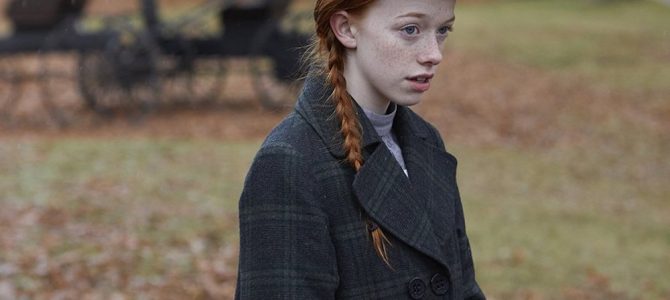
Netflix’s much-anticipated “Anne of Green Gables” adaptation, “Anne With an E,” was released on Friday. True to form, many “kindred spirits” of the classic children’s book are disappointed with the production.
However, this is not simply a case of “the-book-is-always-better,” nor childhood nostalgia for the incomparable 1985 miniseries with Megan Follows, Colleen Dewhurst, and Richard Farnsworth. Many of us, though perhaps cautiously, were excited to see our favorite red-headed dreamer on screen again. Unfortunately, what we were given was less romantic dreamer and more PTSD survivor on the verge of a mental break.
What is it about endearing childhood classics that makes today’s writers, directors, and producers so eager to butcher them in the name of realism and modernity? Producer Moira Walley-Beckett (who also produced the acclaimed series “Breaking Bad”) has said that she wanted to “push the boundaries” by creating a more dark and “realistic” adaptation. She certainly succeeded at changing the tone and atmosphere. But in so doing, she completely lost Anne.
Anne Confronts A World So Vicious, It’s Unrecognizable
If you have read “Anne of Green Gables,” you know that while Anne has had a tragic childhood before her arrival at the Cuthbert siblings’ farm, she is not defined nor defeated by her past. Yes, she has her sensitivities that occasionally elicit a huge outburst of emotion. but they are well within the realm of bodily dissatisfaction that is typical among pre-teen girls.
Her two most memorable meltdowns are both in response to being twitted about her red hair—first by Mrs. Rachel Lynde, and then by Gilbert Blythe in the infamous “Carrots” incident. In contrast, Walley-Beckett’s Anne walks around with a giant chip on her shoulder, ready to crumble at the slightest provocation. There’s nary a trace in this Anne of the indomitable spirit readers have come to admire so much.
Long-time fans will also find it incomprehensible that Walley-Beckett would transform sweet, simple Avonlea and its kind (if occasionally uptight) citizens into such cold bullies and spineless cowards. Save Matthew, of course, who is suddenly much less of a shy homebody. In the novel, Anne quickly becomes popular in Avonlea, despite her orphan status and silly mishaps. In “Anne With an E,” on the other hand, she is relentlessly and viciously bullied. Even her bosom friend, Diana, seems somewhat unwilling to stand up to her tormentors.
There is a world of difference between being unable to defy her mother to see Anne and half-heartedly trying to smooth things over after the other girls refuse to eat with Anne and call her trash. One can presume that the show runners wanted to highlight bullying for modern teenagers. It’s unfortunate that they didn’t realize Montgomery had already done this in the form of Josie Pye, and with a much lighter hand.
The Adaptation Strips the Cuthberts Of Their Humanity
But perhaps the most egregious flaw in “Anne With an E” is the complete reversal of the Cuthbert’s humanity. There is a scene in the very first episode where Marilla takes Anne to Mrs. Spencer, in hopes of rectifying the orphan mix-up. On the way, a stray dog jumps into the road and starts barking, spooking the horse. Anne throws herself out of the carriage and manages to shoo the dog away, thereby showing herself not to be just a silly, loquacious little girl.
This is significant because Montgomery doesn’t allow us, and by extension the Cuthberts, to see this competent side of Anne until well after they have already decided to keep her. They embraced Anne despite prevailing custom, and despite the reason they had sent for an orphan in the first place. They saw her inherent humanity and chose to keep her because they could be of good to her, not because she could be of use to them.
This is utterly lost in an adaptation that focuses so heavily on what Anne can do for the people of Avonlea (shooing stray dogs, saving Minnie May, saving people from fires, attempting to be a farmhand, teaching Gilbert about being an orphan, etc.). Is it really a triumph if she wins acceptance because of her usefulness, and not because of who she is? Isn’t our inherent value—outside of our function—what makes us truly human?
“Anne With an E” is a beautifully filmed, and mostly well-acted production. And while it is certainly more realistic, it sucks the soul out of a beautiful tale of friendship, love, humanity, trust, and belonging. The “modern” Anne we’re left with is a hollow shell of the Anne that has been beloved for more than a century. It’s enough to put us in the depths of despair.









